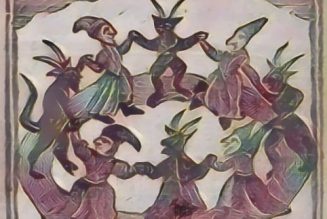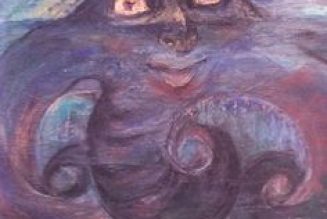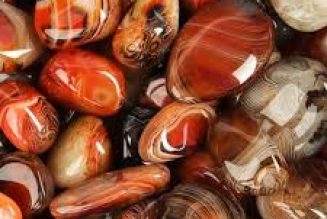This is the old Scottish name given to anything a witch used to fly on.
Contrary to popular belief, the instrument of the witches’ legendary flights through the air was by no means always a broomstick.
The earliest accounts often refer to a forked wand, or simply a staff, which is given to the witch when she is initiated, together with a vessel of ointment, the witches’ unguent; and it is the latter which enables the witch to fly.
One of the earliest writers on witchcraft whose book was printed, was Ulrich Molitor, a Professor of the University of Constance.
His book, De Lamiis (Of Witches), was published in 1489 and contains six very quaint and rather attractive woodcuts.
One of them is the earliest known picture from a printed book of witches in flight.
It depicts three witches, wearing fantastic animal masks, and sharing the same forked staff, on which they are soaring over the countryside.
The incidence of this forked staff as a bune wand is interesting when we remember that Diana and Hecate, the classical moon goddesses of
witchcraft were both given the title Trivia, ‘of the three ways’, and their statues stood at places where three roads met.
The forked staff could well symbolize this and hence be used in witches’ rituals.
It also resembled the horns of the Horned God.
Long-stalked plants were often believed to be bune wands for witches, especially such plants as grew in wild and desolate places.
The yellow ragwort is one such; and there is a saying in the Isle of Man, “As arrant a witch as ever rode a ragwort.”
















































